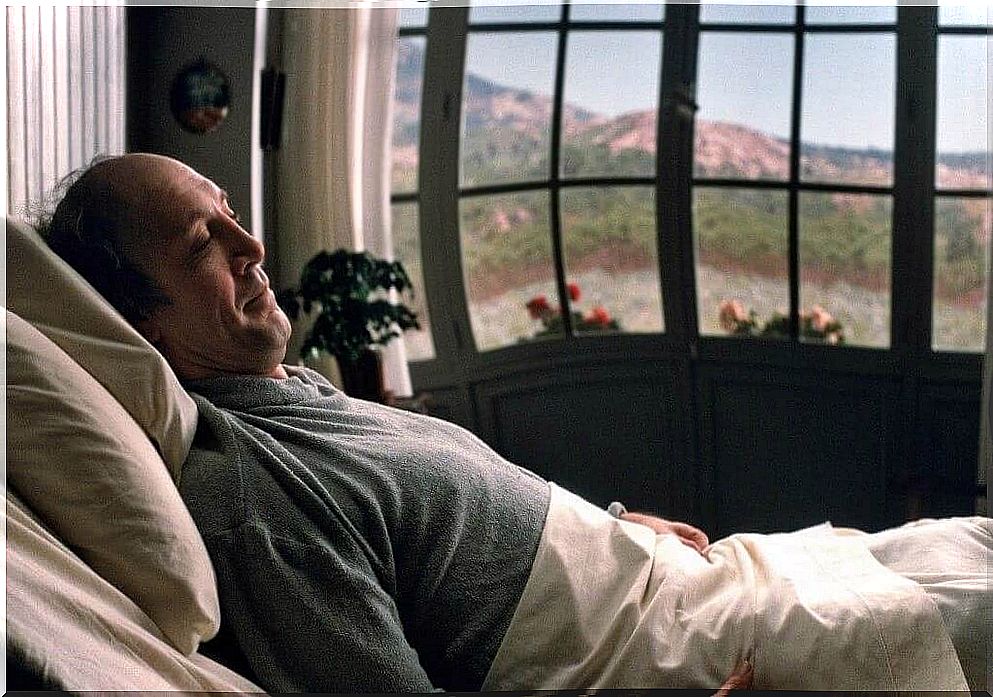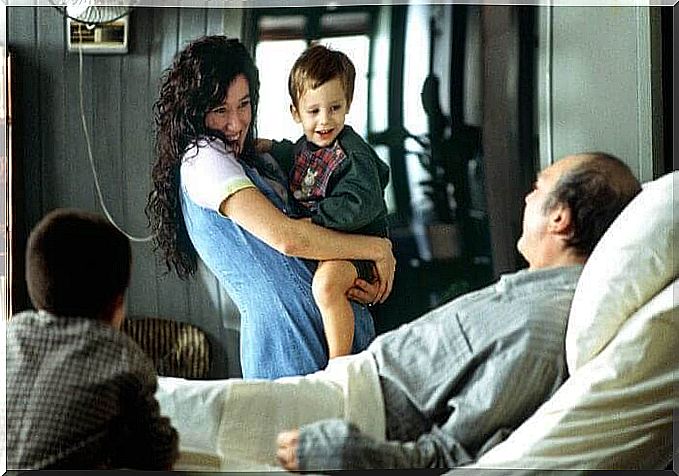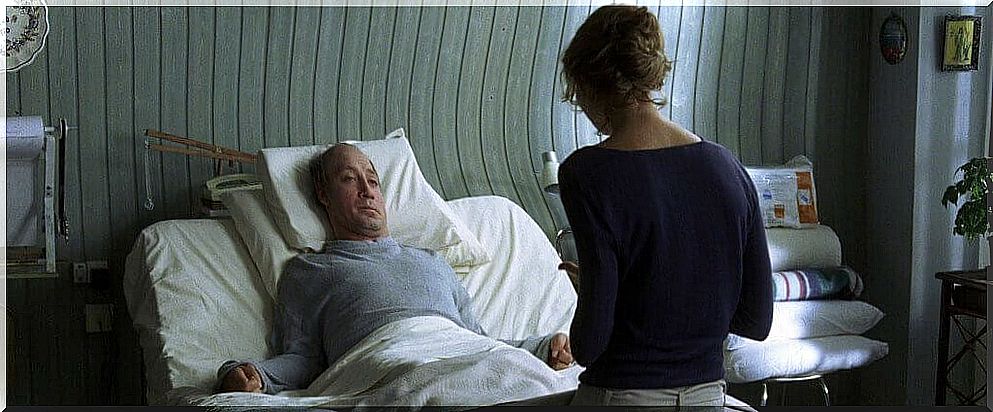Mar Adentro: When Life Is An Obligation

Mar adentro is a Spanish film, released in theaters in 2004, directed by Alejandro Amenábar and starring Javier Bardem. The film is based on a true story, the life of Ramón Sampedro, a man who, after becoming quadriplegic, decided to end his life.
Ramón Sampedro’s story was very publicized in Spain, a country where euthanasia is not legal ; 20 years have passed since the death of Ramón Sampedro and, to this day, the law still does not provide for assisted suicide, putting this story again on the agenda.
Mar adentro rekindled the flame of controversy and reopened a case that was not yet quite closed as the justice had acquitted, for lack of evidence, Ramona Maneiro, Ramón’s wife, who later pleaded guilty when the The offense was already time-barred. The first film inspired by this story was Condemned to Live (2001), but the most recognized and acclaimed was unquestionably Mar adentro , which won the Oscar for best foreign language film.
Despite the success, the film also received a number of negative reviews from the press and some quadriplegic groups who questioned Sampedro’s attitude towards life. The film, however, simply reminds us of a high-profile real-life case as well as the issue of the right to a dignified death, the freedom to decide that Sampedro appealed to.
Ramón Sampedro, in addition to the media and cinematographic heritage, transposed his story in two written works: Letters from Hell and When I fell, published posthumously. All this made Ramón Sampedro a character easily recognized by most Spaniards and closely linked to the fight for euthanasia.

Mar adentro, live or die?
Ramón Sampedro was born in Galicia in 1943. He worked as a merchant seaman until, at the age of 25, he suffered an accident that left him bedridden for the rest of his life. Knowing that he could never move again, that his life would always depend on the care of others, Ramón Sampedro decided to die and wanted to do so with dignity, thus becoming the first Spaniard to seek assisted suicide. This turned his case into a source of controversy and wrestling with the courts.
Seeing that his will could not be realized within a legal framework, he decided to do it in secret and, in doing so, counted on the help of his friend Ramona Maneiro since, due to his condition of quadriplegic, he could not do it. himself.
Ramón recorded a video as he drank a glass of water containing potassium cyanide, in which he explained why he felt he deserved to die with dignity and how he carried out this action, further specifying that justice should not seek culprits. He was the mastermind of the plan and the people who worked with him had only lent their hands.
We see in the film some discrepancies about Ramón’s decision : on the one hand, we have the different members of his family, who are opposed to death. His brother considers that they wish the best for Ramón and that the best thing is not to die. On the other hand, we find characters who sympathize with Ramón, especially Julia, a lawyer, and Rosa, a neighbor who, at the beginning, is rather reluctant, but will end up helping Ramón.

The character of Rosa will be crucial, it is partially inspired by Ramona Maneiro. She will be responsible for helping Ramón. She approaches him at first after seeing him on TV and thinks that she can help him regain the desire to live, but eventually she will fall in love with him and understand that she has to come to terms with his decision.
Julia, meanwhile, will be the one who takes the case to court. She, unlike Rosa, understands Ramón from the start because she herself suffers from a degenerative disease and therefore considers the possibility of suicide.
Why did Ramón Sampedro want to die? Why did he say his life was not worthy? Countless groups reacted to his claims, assuring that a quadriplegic person could be happy, live with dignity.
One of the most critical moments on this point comes when a quadriplegic priest comes to see Ramón. Both begin a discussion on ethical, moral and religious issues. The priest insists that life belongs to God and that living is not just running or moving your arms, that it is possible to live in a wheelchair in the most dignified way possible. It’s not that Sampedro doesn’t accept or understand this position, he just doesn’t want to live, doesn’t want to keep fighting or accept the wheelchair, he prefers to die quietly.
All of this leads us to believe that in the face of this question there is no correct or true position. Choosing to live or die is not a better option, it is simply a matter of personal and individual decisions that no one should intervene. It will certainly seem foolish to us to force someone to die or to convince them to die, so why force someone to live?
Mar adentro, the controversy surrounding euthanasia
The reality is that euthanasia is a sensitive issue insofar as, in addition to the personal decision, other factors such as cultural, religious, bereavement on the part of family members and relatives, etc. intervene. Accepting death is not easy for anyone, but accepting that someone wants to die is even more complicated .

Life was an obligation for Ramón Sampedro, his disability was hell and rather than trying to regain the desire to live, he decided to fight to die, to die with dignity without anyone having legal problems after his death. . We are witnessing this legal battle in Mar adentro , which is still going on.
In some countries, such as Belgium, the Netherlands and some states in the United States, euthanasia is legal and has been perfectly suited to health, and more and more people are calling for this type of death today. It’s not that euthanasia is contagious, the reality is that it has always existed and that cases like Ramon Sampedro’s are not that rare, they simply remained in the shadows in the past, forcing people to die outside of any legal context.
The media side of the affair, the video of his death, the appearance of the film Mar adentro , etc. encouraged debate in Spain ; a debate which, as we pointed out previously, is the subject of a multitude of positions. This confrontation leads nowhere, however, because the reality is that if someone is convinced of their decision, they will do everything possible to achieve their ends.
It is normal that relatives are the most affected and in the first place refuse the choice of that loved one. Nonetheless, under these assumptions, understanding, love and even psychological support for families may be the key to making them come to terms with the decision to die.
We cannot judge anyone for their decisions or actions, nor can we force them to change their mind, what is correct? There is probably no correct decision here, just respect for what has been decided. Mar adentro shows us that we can agree or disagree, but ultimately love and understanding will be stronger than any personal idea.










